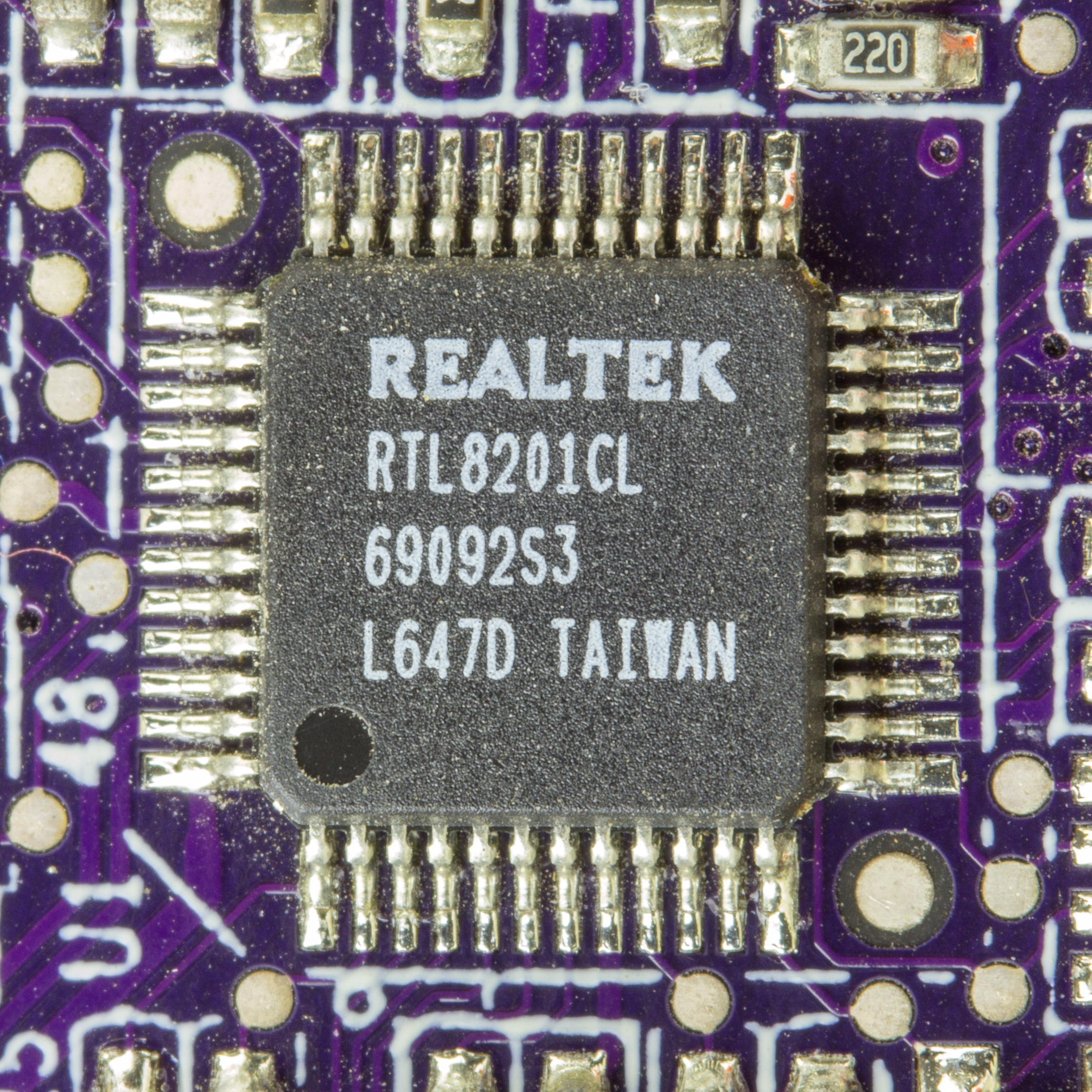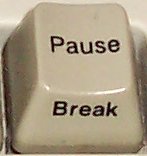|
Mark And Space
Mark and space are terms used in telecommunications to describe two different signal states of a communications signal, generally at the physical layer of a communications system. The terms derive from the early days of the electric telegraph system, where the ''marking'' state would cause a mark to be output on paper, and the ''spacing'' state would create no mark. The terms would continue to be used in systems such as RS-232, with similar conventions, that "mark" would be encoded by a negative voltage (or current flow), and "space" by a positive voltage (or no current flow). In such systems, the line is typically left in the "mark" state when idle. "Mark" is generally identified with the binary digit "1" and "space" with the binary digit "0". See also * Baud * Break key *''Laws of Form'' * Morse code Morse code is a telecommunications method which Character encoding, encodes Written language, text characters as standardized sequences of two different signal durations ... [...More Info...] [...Related Items...] OR: [Wikipedia] [Google] [Baidu] |
Telecommunications
Telecommunication, often used in its plural form or abbreviated as telecom, is the transmission of information over a distance using electronic means, typically through cables, radio waves, or other communication technologies. These means of transmission may be divided into communication channels for multiplexing, allowing for a single medium to transmit several concurrent Session (computer science), communication sessions. Long-distance technologies invented during the 20th and 21st centuries generally use electric power, and include the electrical telegraph, telegraph, telephone, television, and radio. Early telecommunication networks used metal wires as the medium for transmitting signals. These networks were used for telegraphy and telephony for many decades. In the first decade of the 20th century, a revolution in wireless communication began with breakthroughs including those made in radio communications by Guglielmo Marconi, who won the 1909 Nobel Prize in Physics. Othe ... [...More Info...] [...Related Items...] OR: [Wikipedia] [Google] [Baidu] |
Physical Layer
In the seven-layer OSI model of computer networking, the physical layer or layer 1 is the first and lowest layer: the layer most closely associated with the physical connection between devices. The physical layer provides an electrical, mechanical, and procedural interface to the transmission medium. The shapes and properties of the electrical connectors, the frequencies to transmit on, the line code to use and similar low-level parameters, are specified by the physical layer. At the electrical layer, the physical layer is commonly implemented in a dedicated PHY chip or, in electronic design automation (EDA), by a design block. In mobile computing, the MIPI Alliance *-PHY family of interconnect protocols are widely used. Role The physical layer defines the means of transmitting a stream of raw bits over a physical data link connecting network nodes. The bitstream may be grouped into code words or symbols and converted to a physical signal that is transmitted over ... [...More Info...] [...Related Items...] OR: [Wikipedia] [Google] [Baidu] |
Electric Telegraph
Electrical telegraphy is Point-to-point (telecommunications), point-to-point distance communicating via sending electric signals over wire, a system primarily used from the 1840s until the late 20th century. It was the first electrical telecommunications system and the most widely used of a number of early messaging systems called ''telegraphs'', that were devised to send text messages more quickly than physically carrying them. Electrical telegraphy can be considered the first example of electrical engineering. Electrical telegraphy consisted of two or more geographically separated stations, called telegraph offices. The offices were connected by wires, usually supported overhead on utility poles. Many electrical telegraph systems were invented that operated in different ways, but the ones that became widespread fit into two broad categories. First are the needle telegraphs, in which electric current sent down the telegraph line produces electromagnetic force to move a needle ... [...More Info...] [...Related Items...] OR: [Wikipedia] [Google] [Baidu] |
Rs232 Oscilloscope Trace
RS may refer to: Businesses and organizations * RS Group, entertainment & media company in Thailand * RS Group plc, British electronics & industrial distributor in England with brands including RS Components and RS Americas, Inc * RS Infotainment, Indian film production and distribution company * RS Productions, defunct Australian television and radio production company * Relief Society, an official auxiliary of The Church of Jesus Christ of Latter-day Saints (LDS Church) * République solidaire, a French political party * Roberval and Saguenay Railway (reporting mark RS) * Russian Party (Serbia) (''Ruska stranka''), a political party in Serbia Sport * RS Sailing, an international designer and builder of sailboats and dinghies * Queens Park Rangers F.C., a professional football club from Shepherd's Bush, London, commonly nicknamed 'The Rs' Places * Republic of Serbia (ISO 3166-1 code RS), country * Republic of Slovenia, country * Republika Srpska, one of the two political ... [...More Info...] [...Related Items...] OR: [Wikipedia] [Google] [Baidu] |
RS-232
In telecommunications, RS-232 or Recommended Standard 232 is a standard introduced in 1960 for serial communication transmission of data. It formally defines signals connecting between a ''DTE'' (''data terminal equipment'') such as a computer terminal or PC, and a ''DCE'' ('' data circuit-terminating equipment'' or '' data communication equipment''), such as a modem. The standard defines the electrical characteristics and timing of signals, the meaning of signals, and the physical size and pinout of connectors. The current version of the standard is ''TIA-232-F Interface Between Data Terminal Equipment and Data Circuit-Terminating Equipment Employing Serial Binary Data Interchange'', issued in 1997. The RS-232 standard had been commonly used with serial ports and serial cables. It is still widely used in industrial communication devices. A serial port complying with the RS-232 standard was once a standard feature of many types of computers. Personal computers used them ... [...More Info...] [...Related Items...] OR: [Wikipedia] [Google] [Baidu] |
Binary Digit
Binary may refer to: Science and technology Mathematics * Binary number, a representation of numbers using only two values (0 and 1) for each digit * Binary function, a function that takes two arguments * Binary operation, a mathematical operation that takes two arguments * Binary relation, a relation involving two elements * Finger binary, a system for counting in binary numbers on the fingers of human hands Computing * Binary code, the representation of text and data using only the digits 1 and 0 * Bit, or binary digit, the basic unit of information in computers * Binary file, composed of something other than human-readable text ** Executable, a type of binary file that contains machine code for the computer to execute * Binary tree, a computer tree data structure in which each node has at most two children * Binary-coded decimal, a method for encoding for decimal digits in binary sequences Astronomy * Binary star, a star system with two stars in it * Binary planet ... [...More Info...] [...Related Items...] OR: [Wikipedia] [Google] [Baidu] |
Baud
In telecommunications and electronics, baud (; symbol: Bd) is a common unit of measurement of symbol rate, which is one of the components that determine the speed of communication over a data channel. It is the unit for symbol rate or modulation rate in symbols per second or pulses per second. It is the number of distinct symbol changes (signalling events) made to the transmission medium per second in a digitally modulated signal or a bd rate line code. Baud is related to '' gross bit rate'', which can be expressed in bits per second (bit/s). If there are precisely two symbols in the system (typically 0 and 1), then baud and bits per second are equivalent. Naming The baud unit is named after Émile Baudot, the inventor of the Baudot code for telegraphy, and is represented according to the rules for SI units. That is, the first letter of its symbol is uppercase (Bd), but when the unit is spelled out, it should be written in lowercase (baud) except when it begins a sentence ... [...More Info...] [...Related Items...] OR: [Wikipedia] [Google] [Baidu] |
Break Key
The Break key (or the symbol ⎊) of a computer keyboard refers to breaking a Telegraphy, telegraph circuit and originated with 19th century practice. In modern usage, the key has no well-defined purpose, but while this is the case, it can be used by software for miscellaneous tasks, such as to switch between multiple login sessions, to terminate a program, or to interrupt a modem connection. Because the break function is usually combined with the pause function on one key since the introduction of the IBM Model M 101-key keyboard in 1985, the Break key is also called the Pause key. It can be used to pause some computer games. History A standard telegraph circuit connects all the keys, Telegraph sounder, sounders and batteries in a single series loop. Thus the sounders actuate only when both keys are down (closed, also known as "mark and space, marking" — after the ink marks made on paper tape by early printing telegraphs). So the receiving operator has to hold their key do ... [...More Info...] [...Related Items...] OR: [Wikipedia] [Google] [Baidu] |
Laws Of Form
''Laws of Form'' (hereinafter ''LoF'') is a book by G. Spencer-Brown, published in 1969, that straddles the boundary between mathematics and philosophy. ''LoF'' describes three distinct logical systems: * The primary arithmetic (described in Chapter 4 of ''LoF''), whose models include Boolean arithmetic; * The primary algebra (Chapter 6 of ''LoF''), whose models include the two-element Boolean algebra (hereinafter abbreviated 2), Boolean logic, and the classical propositional calculus; * Equations of the second degree (Chapter 11), whose interpretations include finite automata and Alonzo Church's Restricted Recursive Arithmetic (RRA). "Boundary algebra" is a term for the union of the primary algebra and the primary arithmetic. ''Laws of Form'' sometimes loosely refers to the "primary algebra" as well as to ''LoF''. The book The preface states that the work was first explored in 1959, and Spencer Brown cites Bertrand Russell as being supportive of his endeavour. He also t ... [...More Info...] [...Related Items...] OR: [Wikipedia] [Google] [Baidu] |
Morse Code
Morse code is a telecommunications method which Character encoding, encodes Written language, text characters as standardized sequences of two different signal durations, called ''dots'' and ''dashes'', or ''dits'' and ''dahs''. Morse code is named after Samuel Morse, one of the early developers of the system adopted for electrical telegraphy. International Morse code encodes the 26 ISO basic Latin alphabet, basic Latin letters to , one Diacritic, accented Latin letter (), the Arabic numerals, and a small set of punctuation and procedural signals (Prosigns for Morse code, prosigns). There is no distinction between upper and lower case letters. Each Morse code symbol is formed by a sequence of ''dits'' and ''dahs''. The ''dit'' duration can vary for signal clarity and operator skill, but for any one message, once the rhythm is established, a beat (music), half-beat is the basic unit of time measurement in Morse code. The duration of a ''dah'' is three times the duration ... [...More Info...] [...Related Items...] OR: [Wikipedia] [Google] [Baidu] |



